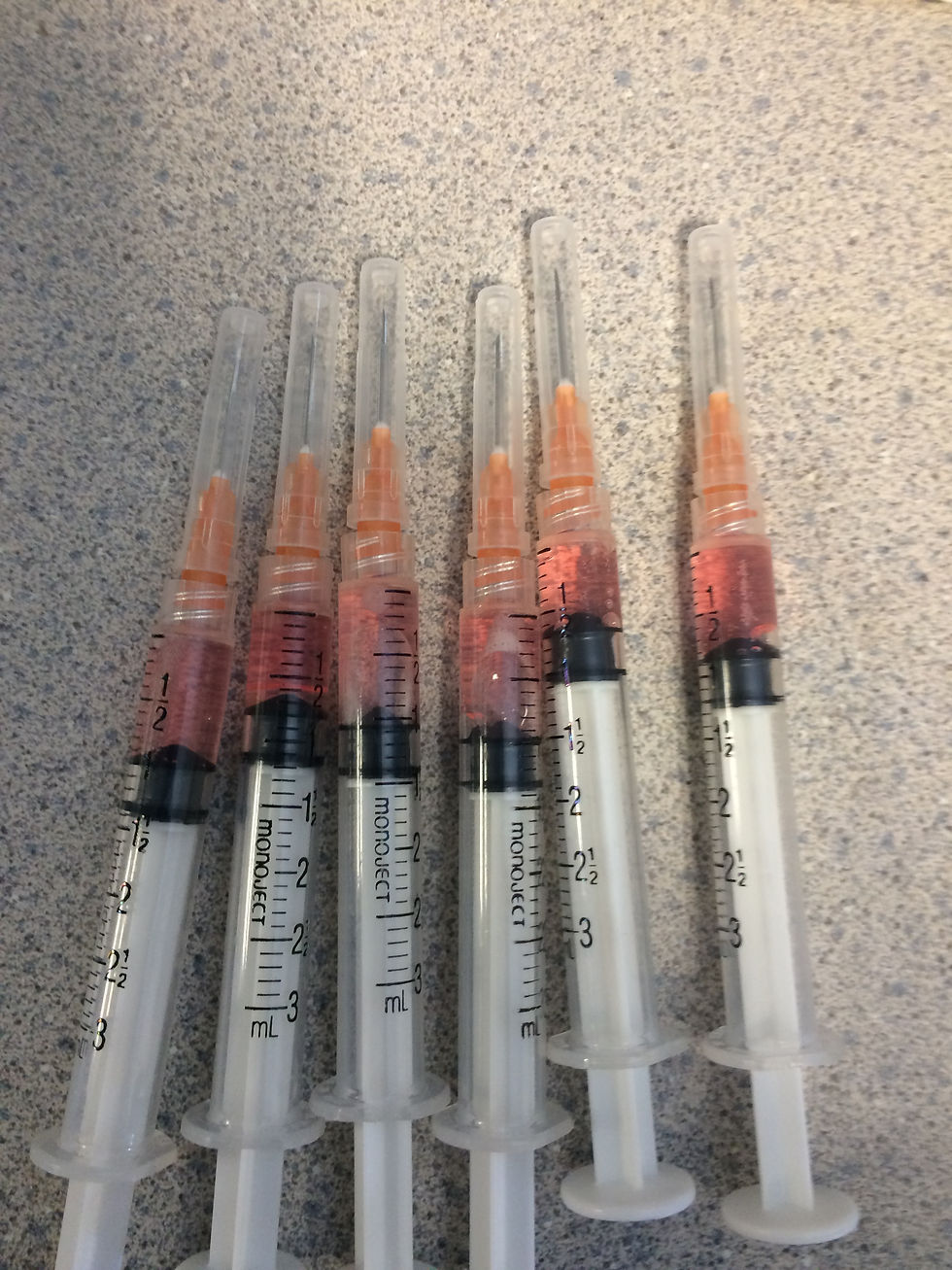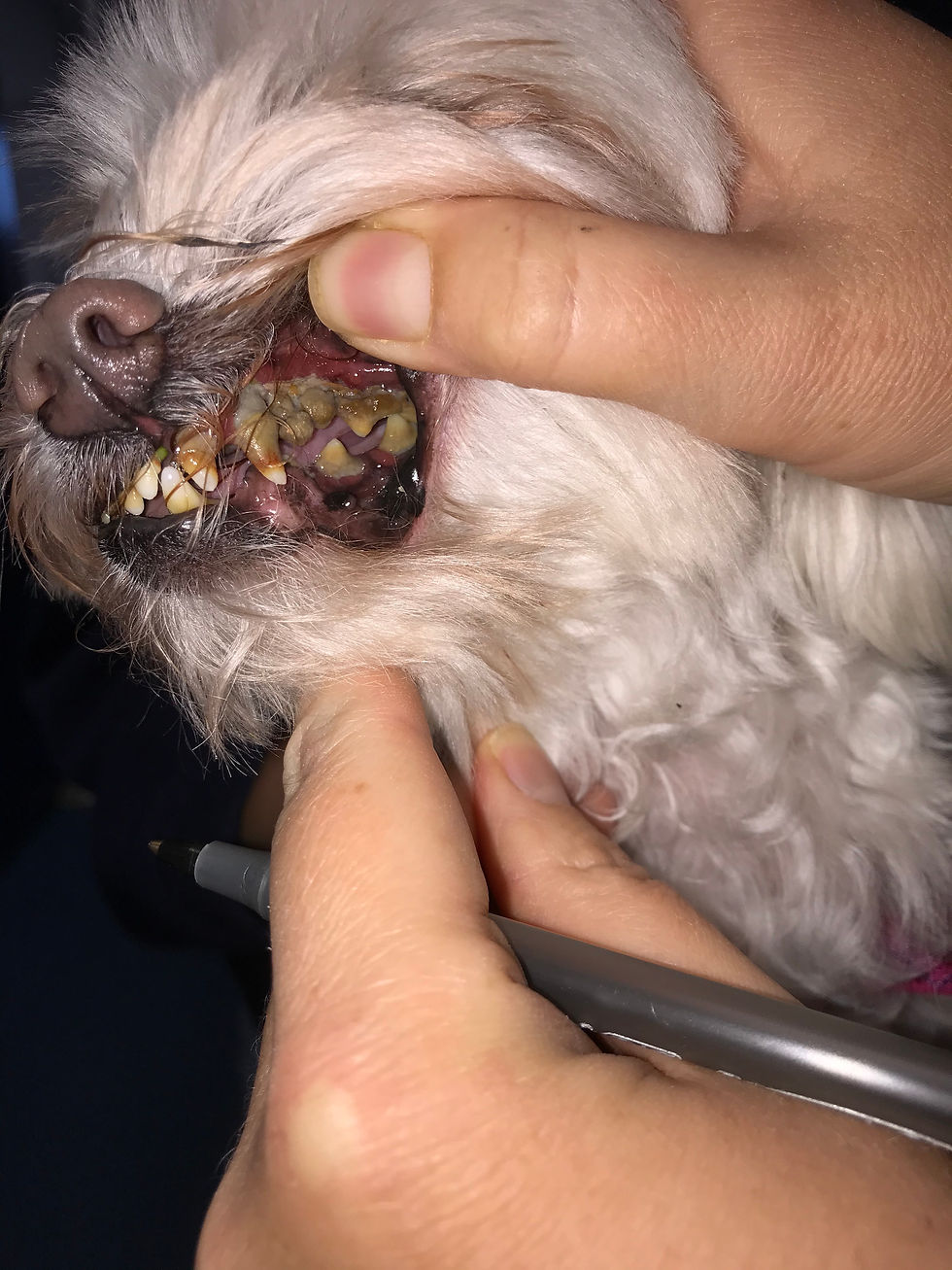Giving lots of Vaccines and Fainting on the Job
- Gianna Scala

- Dec 5, 2019
- 3 min read
Updated: Jan 14, 2020
First Day Working at the Southampton Animal Shelter Foundation: October 28th
My first day working at the Southampton Animal Shelter was by far the most eventful work day that I have had so far. I got to observe many surgeries, procedures, and routine wellness check-ups.
The first activities I observed were routine wellness check-ups, which included physical exams, vaccines, and drawing blood for testing. A physical exam begins with the veterinarian listening to the heart and the lungs of the patient in order to make sure there are no irregularities. Next the doctor will make sure to feel around the animal's body, checking for growths, misplaced organs or bones, and any other possible abnormalities. Once this is complete the doctor will examine the eyes, ears, and nose of the animal in order to ensure they are working properly and to make sure that there are no signs of disease or infection. Next, the doctor will then examine the animal's mouth and teeth to check for any oral diseases or infections. Once the physical exam is complete the doctor checks due dates of vaccines or requested medical tests (common tests and vaccinations include Lyme disease, distemper, rabies, leptospira, influenza, and bordetella, among others).
The veterinary surgeon I worked under for the majority of my time at the clinic today was Dr. Nicole Mirante. The first exam that I observed her perform was on a beagle mix puppy who was getting her routine physical and vaccinations. That day she was scheduled to get her rabies and distemper vaccinations. As this was taking place, Dr. Mirante explained to me that there is a specified area to give the animal its vaccination because this makes it easier to track if the animal had a reaction to one of the vaccines. For example, Dr. Mirante's general rule of thumb (as it is for many other veterinarians) is rabies in the right shoulder, Lyme in the left hip, and leptospirosis in the left shoulder.

Giving vaccines probably seems like the most boring and routine part of being a veterinarian; however, it is also one of the most important aspects of being a veterinarian because it not only keeps the animals healthy, but it also keeps people out of dangers as well. Vaccinations also require a very keen eye and the utmost attention to ensure that each patient is getting the correct dose of each vaccine according to their weight class.
That first day I also had a unique experience. As I was observing Dr. Mirante begin to close after performing a cat spay, I was hit with a wave of light headedness. I wanted to continue observing the final parts of the surgery, so I decided to stay standing and watching rather than sitting down or removing myself from the room. Eventually, this proved to be a very bad decision, and I ended up fainting. This was quite embarrassing because the last thing I wanted to do on my first day of interning at a surgical clinic is pass out. However, the doctors were very understanding and even expressed that it had happened to them more than once while they were in vet school. Sometimes, events like this just happen, and in order to avoid this, I should not to lock my knees while observing, and if I feel even slightly lightheaded, just step back and take a seat until I feel ready to jump back in and continue observing.



Comments